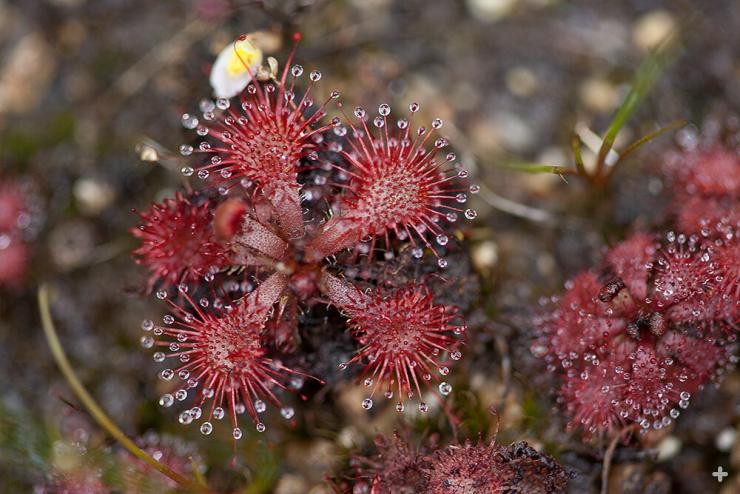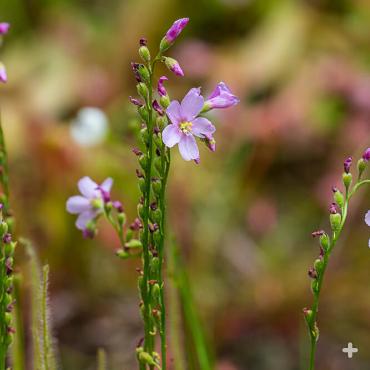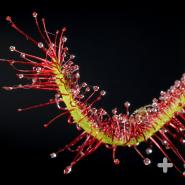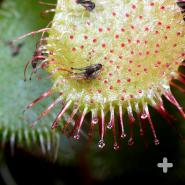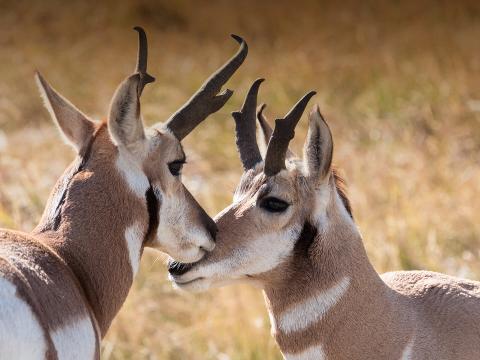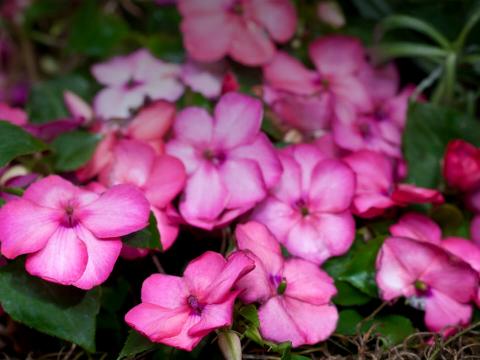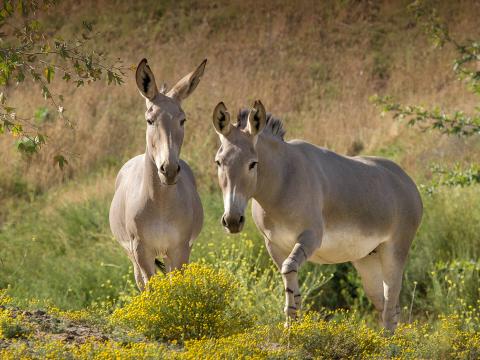Sundew
- DIVISION: Magnoliophyta
- CLASS: Magnoliopsida
- ORDER: Nepenthales
- FAMILY: Droseraceae
- GENUS: Drosera
OVERVIEW
Sundews shimmer and glisten as if the sun were glancing off their dew-covered leaves. But that's not dew. The leaves of a sundew are covered with long, nectar-tipped tentacles. This nectar is also a powerful glue, which traps the unfortunate insect that stops for a sip. The struggles of an insect as small as a gnat cause the leaf to slowly curl around its trapped prey. They also cue the leaf to produce digestive enzymes that dissolve the captured insect, and the plant absorbs the liquid, nutrient-rich soup. And you can't fool a sundew. Non-nutritious matter that falls onto a sundew may cause a leaf to begin to curl, but it soon rejects and releases the offending annoyance.
Carnivorous plant enthusiasts describe the sundews' method of catching prey as a "sticky flypaper trap."
CHARACTERISTICS
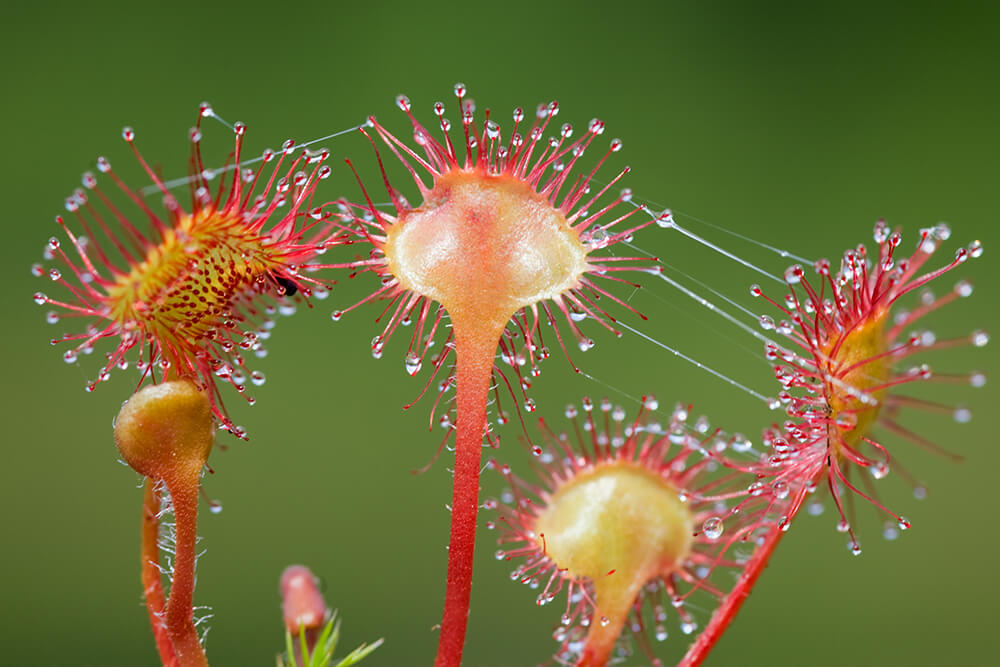
Sundew nectar is sticky.
Like other carnivorous plants, many sundews grow in places with wet, acidic soil that's poor in organic nitrogen and phosphorus: typically bogs, fens, swamps, and moist, sandy streambanks. Many grow in areas heavy with sphagnum moss. Other varieties grow in sandy, nutrient-poor soils that are dry for a good part of the year. You can find sundews on every continent except Antarctica.
Depending on the species, sundew leaves may be nearly circular or long and thread-like. Leaves are covered with hair-like tentacles, which may be brightly colored. At the tip of each tentacle, a globular gland secrets a sticky substance.
GROWTH PATTERN
Some tropical sundews grow year-round, but for most, above-ground growth dies back in the winter and emerges again in spring. Sundews in cold, snowy climates survive the winter in a tightly packed bud called a hibernacula. On the other hand, some Australian sundews grow and flower during the wet winter and die back to the ground during the hot, dry summer.
CULTIVATION
Carnivorous plant enthusiasts will find a variety of Drosera available for sale. Sundews from different climates have different growing requirements.
CONSERVATION
Two African sundews— D. insolita and D. katangensis—are critically endangered, according to the IUCN, which also lists a third African variety as vulnerable: D. bequaertii. All three are threatened with habitat loss due to agriculture, oil and gas extraction, mining, dredging, and quarrying.
In fact, habitat loss is an ongoing threat to wetland wildlife around the world, as human population increases and expands into these areas. While not under federal protection, some sundews in the US are listed as threatened or endangered in their native states.


